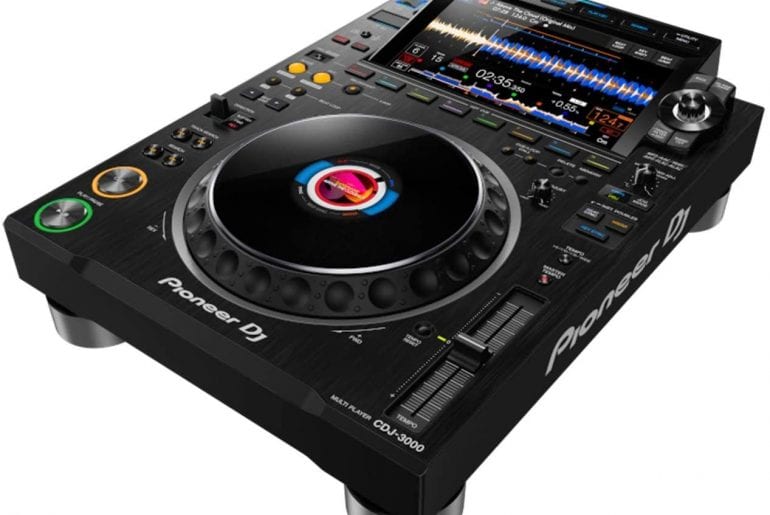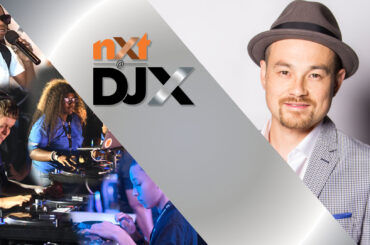By the time you read this review, it will have been almost a year since DJ Times editor Jim Tremayne and I were camped out in Southern California, walking the enormity of the Anaheim Convention Center at Winter NAMM 2020. For several grueling days – it’s quite a large venue – we checked out all the latest DJ, PA and home-studio gear. (Unfortunately, both Jim and I will have to miss the
fun this year; NAMM has gone virtual for 2021 due to the pandemic.)
Among our favorite annual NAMM stops is the Pioneer DJ booth, and at the start of 2020, the L.A.-based company showed a number of interesting new products. In addition to the DJM-V10, a 6-channel tank of a mixer, we also saw the XDJ-XZ all-in-one, standalone DJ system, which we recently reviewed in the magazine.
But we had to wait until the late summer for one of the company’s bigger releases in recent memory: the CDJ-3000 professional DJ multi-player.
Building on Pioneer DJ’s 22-year history with the CDJ line-up, the CDJ-3000 takes its place as the company’s flagship media player. It pushes aside the still-available CDJ-2000NXS2, while (thankfully) dispensing with the tongue-twisting NXS/NXS2 suffix that has been a fixture of the naming conventions of Pioneer DJ’s flagships for a few years now.
While Pioneer DJ does still make several media players that have disc drives on-board for digital disc-based content playback — including the aforementioned CDJ-2000NXS2 — the CDJ-3000 follows the current trend of looking very much like the CDJs of old, but playing back only content from various types of solid-state media. With the CDJ-3000, that includes content on USB- and SD card-based media.
Though I’m puzzled why a DJ might want to do this, it’s apparently also possible to connect a CDJ-3000 to your iPhone. I wasn’t able to personally test this, but using an Apple Lightning to USB3 Camera Adapter — a common way of connecting generic USB devices to an iOS device — you can control and playback media from the rekordbox iOS app. Pioneer DJ isn’t clear on how this might be integrated with a broader DJ set, and the owner’s manual is completely mute on the entire topic.
In the CDJ-3000, Pioneer DJ clearly didn’t just drop the disc player deck from the CDJ-2000NXS2 and call it done, of course. The 3000’s improved touch screen is bigger and clearer than the earlier flagship, and the company has improved the user interface as well.
Unfortunately, the CDJ-3000 suffers from some of the same drawbacks as the XDJ-XZ. First, the user interface design doesn’t seem as contemporary as it feels like it should; it is a touch screen, but it has no multi-touch support (e.g., things like pinch to zoom) to which we’ve all become accustomed in the smartphone era.
But beyond aesthetics, the CDJ-3000, also like the XDJ-XZ, has a pretty strong dependency on the rekordbox computer software. While the 3000 will playback unprepared audio from solid-state media, it’s a big compromise to do so. If you want full music analysis and full playback functionality, all the analysis and prep must to be done offboard with your computer first, saved to the replaceable media, and then used on the CDJ-3000. (Or, you can connect the unit to a laptop, too, as I’ll mention in a moment.)
While the CDJ-3000 has some compromises in those areas, they start to fade away as you begin to use the units. There’s a lot of really great gear on the market these days, no question about it. I’ve said before, and will again… it’s truly a great time to be a DJ with the options we have available to use. But Pioneer DJ has always had a certain cachet as a brand, and a lot of that is supported by the ruggedness and feel of their gear — and the CDJ-3000 is no exception.
In particular, I’ve always loved the jog wheels on Pioneer gear – and on the CDJ-3000, the company has further improved them. But it’s not just the jog wheels I like about Pioneer DJ’s stuff, it’s everything else about the gear that simply feels solid; it feels “right” under your fingertips.
In any case, playing content from solid-state devices is not the CDJ-3000’s only trick; the players are a Hardware Unlock Device for rekordbox, meaning that when connected to a laptop, the full functionality of the software is available at no additional cost, and with no subscription required. This is also Pioneer DJ’s method of bringing streaming services to the table – via the laptop and the rekordbox software. With everything set up and the necessary subscriptions in-place, you can play back music from Beatport Link, Tidal, SoundCloud and others as part of your set.
With a street price of around $2,300 a pop, the CDJ-3000 is likely to find use in a very specific niche of the DJ market, a niche that I’d argue has some elevated performance expectations. The units deliver with eight hot cue buttons, dedicated beat jump buttons, and loop controls that allow the performing DJ to slice, dice and perhaps even julienne their music in countless creative ways.
Other new features on the CDJ-3000 include: Key Shift function, which allows DJs to manually shift key of track up or down; Touch Cue, which allows DJs to listen to another part of a track that’s currently playing; Touch Preview, which enables quick track selection; Stacked Waveforms, which help the DJ spot perfect mix points of a track; and support for 3Band Waveform, a color-coded system which allows DJs to understand how a track sounds without listening to it.
It’s worth mentioning too that the CDJ-3000 supports Pioneer DJ’s proprietary Pro DJ Link, which allows you to network multiple Pioneer DJ units of various types together via standard Ethernet cabling. With multiple players networked in this way, you can share media sources across decks, and it’s also the vehicle to support Pioneer DJ’s own RB-DMX1 lighting interface, which in turn allows you to sync your light shows to the music you’re playing.
One thing that was conspicuously absent from the CDJ-3000 at the time I had the review units is support for Serato DJ Pro. That support has been promised for a future software update to the units, which should make a lot of the Pioneer DJ faithful much happier with these new decks.
Conclusions: As I mentioned earlier, the new Pioneer CDJ-3000 will set you back roughly $2,300 each. For that investment, you get a really solid, reliable media player — a product born from an extensive legacy, and an unwavering commitment to the DJ market. With a solid feature set designed to support those at the top of the DJ game, no doubt the CDJ-3000 is destined to become a fixture in high-end venues and in the riders of big-name DJs. Of course, part of that depends on us emerging intact from a global pandemic, and to a degree, on Pioneer completing the Serato DJ support. But as we swing into 2021, it would appear that — thank goodness — both are simply a matter of time.
To check out more tech reviews, click here.







